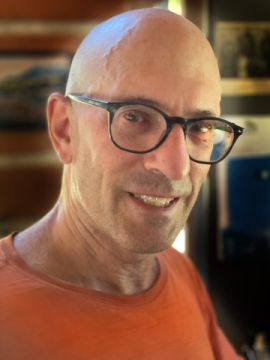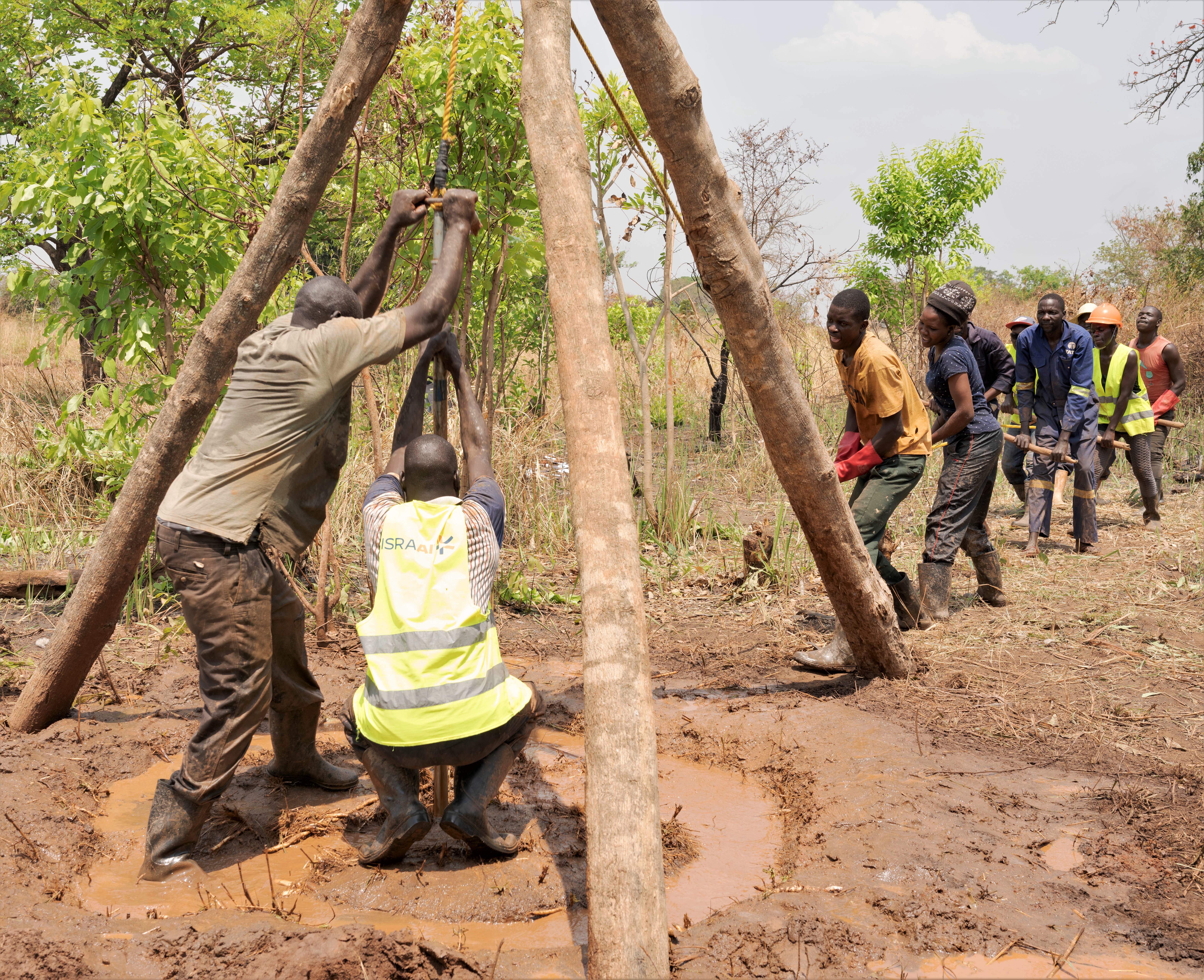Listen here on Spotify | Listen here on Apple Podcast
Episode recorded May 9, 2023
Episode released on June 15, 2023
 Paul Bauman is the Principal Geophysicist at BGC Engineering in Calgary, Canada and has been conducting humanitarian groundwater work in developing countries globally over the past 30 years. In this podcast we focus on his work applying geophysics to make invisible groundwater more visible for development in Sub-Saharan Africa.
Paul Bauman is the Principal Geophysicist at BGC Engineering in Calgary, Canada and has been conducting humanitarian groundwater work in developing countries globally over the past 30 years. In this podcast we focus on his work applying geophysics to make invisible groundwater more visible for development in Sub-Saharan Africa.
Highlights | Transcript
- Near surface geophysics helps make invisible groundwater more visible. Application of seismic refraction and 2-D resistivity greatly improved drilling of successful wells.
- Traditional geophysical approaches, including 1-D resistivity, neglect the complexity of geologic systems in Sub-Saharan Africa.
- Bauman taught short courses on geophysics, hydrogeology, and handpump repair in the Kakuma Refugee camp in Turkana, NW Kenya in 2014, 2015, and the fall of 2016. Training received by people in refugee camps allows them to work in the Water, Sanitation, and Health (WASH) sector in the camp and when they are repatriated.
- Problems with water systems for Kakuma in mid-2010s included limited supply (12 wells, could not meet 20 L/capita/d) and high fluoride, exceeding World Health Organization limit of 1.5 mg/L, and causing dental and skeletal fluorosis.
- Detailed evaluation of the bones in a refugee who spent nine years in Kakuma revealed severe skeletal fluorosis described in the Lancet that was not detected using traditional urine analysis.
- Kakuma and Kalobeyei Refugee camps combined housed ~200,000 refugees in 2020.
- Paul had an opportunity in January 2016 to apply geophysics to site wells in the camp, mapping paleochannels in the system that resulted in high producing wells and avoided deeper weathered volcanics and related fluoride. These wells produced water with fluoride < 1.5 mg/L and a recent March 2023 visit indicated that the new wells were still active and producing low fluoride levels.
- Kakuma Refugee camp is located between two large ephemeral river systems that are interconnected with paleochannels and recharged from surface water upstream in Uganda. This groundwater source helped alleviate a recent multiyear drought linked to La Nina conditions.
- Training of locals helps develop capacity for conducting geophysics, and siting, drilling, developing, and maintaining wells.
- Wells drilled by hand by locals take longer to drill but ensure the communities are engaged, they learn hydrogeology, and are more likely to maintain the manual wells they drill.
- There is a widespread opportunity to map subsurface hydrogeology and petrophysical properties by applying downhole geophysics in boreholes lined with PVC. Resistivity, magnetic susceptibility, and radioactivity (gamma logs) are like human senses to geophysicists to map the geology and water chemistry.
- Removing pumps to repair them provides an opportunity to do downhole geophysics in the empty PVC well casing and analyze groundwater quality and isotopes.
- Success rate with geophysics is very high, 40 holes in Uganda and none of them were dry.
- Need to develop hydrogeology and petrophysics data using geophysics and collating drilling results from various programs in Sub-Saharan Africa.

The village of Teolam is about 50 km (31 miles) northeast of Gulu, a few hundred meters from the paved Gulu-Kitgum Road. Because of easy access, we selected Teolam as our first drilling site to fine tune the manual drilling before targeting more remote locations. Teolam is a village of about 40 households (~8 persons/household) or 320 inhabitants. Previous to this well, their existing water source was a muddy spring on the opposite side of the Gulu-Kitgum Road. Besides being a dangerous trek for children having to cross this highway in the early morning or late evening hours, our field testing of this spring indicated an E Coli count of > 100 CFUs (colony forming units); the spring water was as unfit to drink as it looked.
The Teolam well was drilled manually to a total depth of 21 mbgs (meters below ground surface) using a modified Baptist Drilling Method, like all of our wells. The static water level was at 8.4 mbgs. A PVC machine-slotted screen was run from 10 to 21 mbgs, with the interval covering “saprolite” weathered to unconsolidated sand and gravel and about 1.5 m of saprock (weathered but consolidated rock) at the bottom. The aquifer appears to be unconfined. We have screened over 11 m of saturated aquifer.
A team of 10 drilled and constructed the Teolam well, eight of our Ugandan trainees, and two villagers. In addition, many people from the village helped with clearing, hauling water for the drilling mud, constructing bricks, hauling bricks, feeding the crew, and housing our Ugandan trainees. All of the Ugandan trainees in our program were paid. The total cost of constructing the well, including polymer mud gel, transport, PVC well casing, cement, and an India Mark 2 Handpump was 2,160 USD/
Day 1: Discussions with the village water committee, organizing village labour, clearing the site, cutting 3 trees for the drilling rig.
Day 2: Drilling pilot hole through the surficial laterite.
Day 3 and 4: 3 ½” pilot hole drilled to 21 mbgs.
Day 5: Ream with 4 ½” bit to total depth
Day 6: Ream with 6 ½” bit to total depth
Day 7: Circulate in hole, run 4” casing, run gravel pack over screen, cuttings above gravel pack, 2 m of bentonite to surface.
Days 8 and 9: Install pump pedestal, construct well apron and spillway with brick and cement
Day 10: Install India Mark II handpump, begin well development (i.e. pumping of well to remove fines)
Day 11: Continue well development, construct fence around well site
Day 12: Plant banana trees and other vegetation, construct soak pit and end of spillway to catch runoff, clean site, depart



